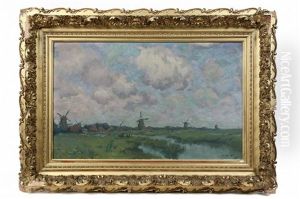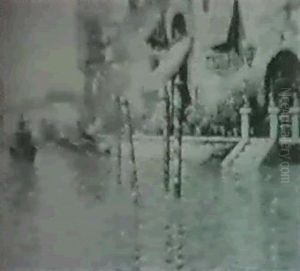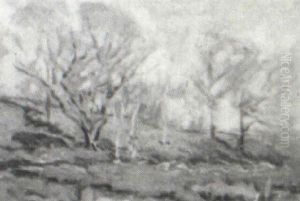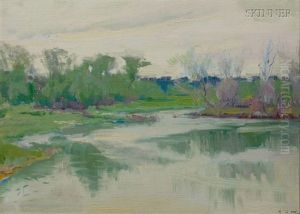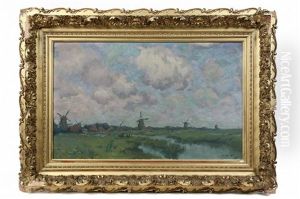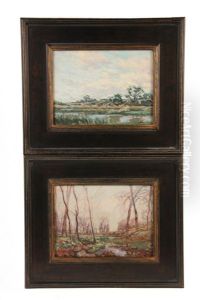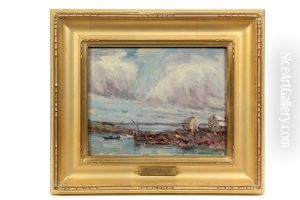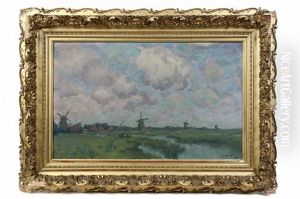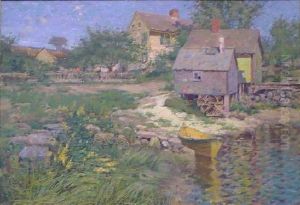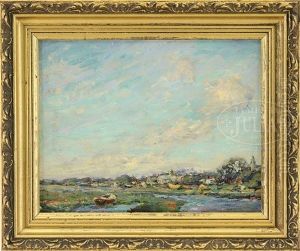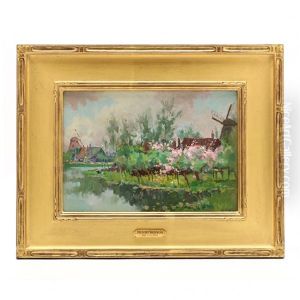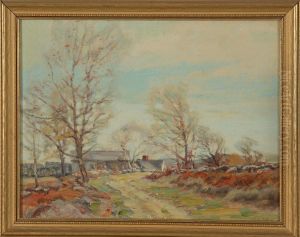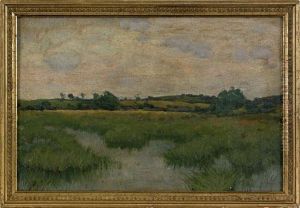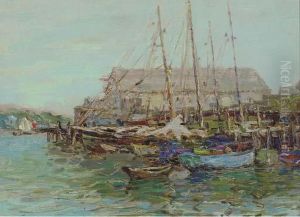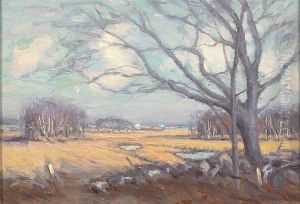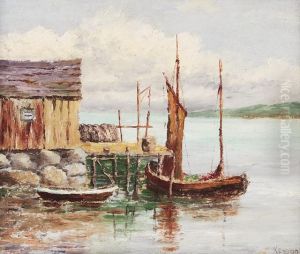Henry Rodman Kenyon Paintings
Henry Rodman Kenyon was an American artist known for his contributions to the world of painting and illustration in the late 19th and early 20th centuries. Born on December 9, 1861, in Savannah, Georgia, Kenyon's early life was marked by the backdrop of the post-Civil War South. Despite the challenging circumstances of the time, Kenyon's interest in art flourished from a young age, leading him to pursue formal training in the field.
Kenyon's educational journey in art took him to some of the most prestigious institutions of his time. He studied at the National Academy of Design in New York, a cornerstone institution for art education in the United States. Seeking further refinement of his skills, Kenyon also traveled across the Atlantic to study at the Académie Julian in Paris, France. Here, he was exposed to the vibrant European art scene, absorbing influences from the Impressionists and other contemporary movements that were reshaping the art world.
Throughout his career, Henry Rodman Kenyon was known for his versatility as an artist. He worked across a range of mediums, including oil painting, watercolor, and illustration. His subject matter was equally diverse, encompassing landscapes, portraits, and genre scenes that captured everyday life with sensitivity and insight. Kenyon's work was widely exhibited during his lifetime, including at prestigious venues such as the Pennsylvania Academy of the Fine Arts and the National Academy of Design, earning him recognition and respect among his peers.
Kenyon's contributions to the art world extended beyond his own creations. He was deeply involved in the artistic community, serving as a mentor to younger artists and participating in various art organizations. His commitment to art education was evident in his role as an instructor, where he shared his knowledge and passion for art with the next generation of artists.
Henry Rodman Kenyon's legacy is preserved in the collections of several American museums and in the appreciation of art historians and collectors. Despite the passage of time, his work continues to be admired for its beauty, technical skill, and emotional depth. Kenyon passed away on October 4, 1926, in New York City, but his artistic achievements and influence on American art remain enduring contributions to the cultural heritage of the United States.
